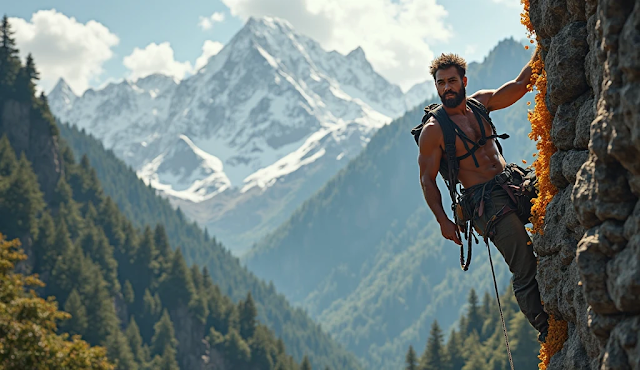Giants of the Himalayas and Beyond
From the icy peaks of the Himalayas to the rugged Karakoram Range, the world’s tallest mountains captivate adventurers and geographers alike. In this guide, we explore the top 30 highest mountains on Earth, their elevations, locations, and unique characteristics. Whether you’re a mountaineer or an armchair traveler, this list will inspire awe for these colossal natural wonders.
Understanding Mountain Heights
Mountains are typically measured by their elevation above sea level. However, alternative metrics like topographic prominence (height relative to the surrounding terrain) or base-to-summit measurements (e.g., Mauna Kea in Hawaii) can shift rankings. For this list, we focus on elevation above sea level, the most widely accepted standard.
The Top 30 Highest Mountains
1. Mount Everest
Height: 8,848 meters (29,032 ft)
Location: Nepal/China
Key Fact: The highest peak on Earth, first summited in 1953. Known as Sagarmatha (Nepal) and Chomolungma (Tibet).
2. K2 (Godwin Austen)
Height: 8,611 meters (28,251 ft)
Location: Pakistan/China
Key Fact: Nicknamed the "Savage Mountain" for its deadly climbing conditions and second-highest fatality rate.
3. Kangchenjunga
Height: 8,586 meters (28,169 ft)
Location: Nepal/India
Key Fact: Sacred to Sikkimese and Nepalese cultures, its name means "Five Treasures of Snow".
4. Lhotse
Height: 8,516 meters (27,940 ft)
Location: Nepal/China
Key Fact: Shares Everest’s base camp and features the steepest face of its size globally.
5. Makalu
Height: 8,485 meters (27,838 ft)
Location: Nepal/China
Key Fact: A pyramid-shaped peak with four sharp ridges, first climbed by a French team in 1955.
6. Cho Oyu
Height: 8,188 meters (26,864 ft)
Location: Nepal/China
Key Fact: Considered the "easiest" 8,000-meter peak due to gradual slopes.
7. Dhaulagiri I
Height: 8,167 meters (26,795 ft)
Location: Nepal
Key Fact: Known as the "White Mountain," it towers over the Kali Gandaki Gorge, the world’s deepest canyon.
8. Manaslu
Height: 8,163 meters (26,781 ft)
Location: Nepal
Key Fact: Called the "Mountain of the Spirit," it’s a popular but challenging climb.
9. Nanga Parbat
Height: 8,126 meters (26,660 ft)
Location: Pakistan
Key Fact: Nicknamed the "Killer Mountain" due to its high fatality rate.
10. Annapurna I
Height: 8,091 meters (26,545 ft)
Location: Nepal
Key Fact: The first 8,000-meter peak ever climbed (1950) but has a 40% fatality rate.
11–20: The Next Ten Giants
Gasherbrum I (Hidden Peak) – 8,080m (Pakistan/China)
Broad Peak – 8,051m (Pakistan/China)
Gasherbrum II – 8,035m (Pakistan/China)
Shishapangma – 8,027m (China)
Gyachung Kang – 7,952m (Nepal/China)
Annapurna II – 7,937m (Nepal)
Gasherbrum IV – 7,932m (Pakistan)
Himalchuli – 7,893m (Nepal)
Distaghil Sar – 7,884m (Pakistan)
Nuptse – 7,861m (Nepal)
21–30: Peaks Above 7,200 Meters
The remaining ten peaks in the top 30 are part of the 108 mountains over 7,200 meters in Asia. Notable examples include:
Jengish Chokusu (7,439m) – Kyrgyzstan/China
Gongga Shan (7,556m) – China
Tirich Mir (7,708m) – Pakistan
Ismoil Somoni Peak (7,495m) – Tajikistan
Key Insights
Geographic Concentration: All 30 peaks are in Asia, primarily in the Himalayas and Karakoram ranges.
Climbing Challenges: K2 and Annapurna I are among the deadliest, while Cho Oyu is considered more accessible.
Cultural Significance: Many peaks, like Kangchenjunga and Shishapangma, hold spiritual importance for local communities.
FAQs
Final Thoughts
The world’s highest mountains are not just geological marvels but also symbols of human endurance and cultural heritage. For climbers, they represent the ultimate challenge, while for others, they inspire wonder at Earth’s raw beauty.
Explore Further: Check out our guides to trekking in Nepal or climbing preparation tips.
Meta Description: Discover the top 30 highest mountains in the world, from Everest to hidden giants. Explore their heights, locations, and unique climbing challenges in this SEO-optimized guide.
By incorporating keywords like "highest mountains," "Himalayas," and "8,000-meter peaks," this blog post is designed to rank well on search engines while offering readers a comprehensive and engaging resource.






0 Comments